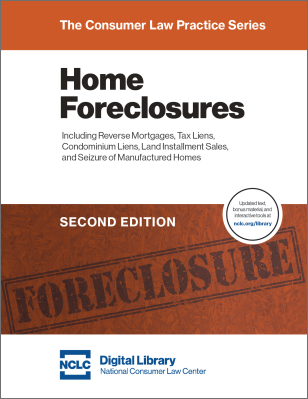A federal court’s August ruling in Sisti v. Federal Housing Finance Agency, 2018 WL 3655578 (D.R.I. Aug. 2, 2018), has the potential to revolutionize Fannie Mae and Freddie Mac foreclosure procedures in the majority of states that allow nonjudicial foreclosures. By finding Fannie and Freddie to be state actors, those entities’ foreclosure practices must meet constitutional due process standards. If followed by other courts, this may radically change Fannie and Freddie foreclosure practices in nonjudicial foreclosure states.
Fannie and Freddie Are Now Under Federal Agency Conservatorship
Sisti finds Fannie Mae and Freddie Mac to be state actors because they are under conservatorship of a federal agency. In 2008, Congress authorized the federal government to take over operation of both Fannie and Freddie, known as government sponsored enterprises (GSEs). Congress created the Federal Housing Finance Agency (FHFA) to place the GSEs in receivership or conservatorship. See 12 U.S.C. § 4617(a)(2). The GSEs have remained under the FHFA’s conservatorship ever since then. Under the conservatorship FHFA controls all aspects of the GSEs’ activities. See Leon Cty. Fla v. FHFA, 700 F.3d 1273, 1279 (11th Cir. 2012). The FHFA is an agency of the federal government. As such it is subject to all requirements that apply to a federal agency, including compliance with the Administrative Procedure Act. FHFA has always claimed that its own broad governmental immunity covers the GSEs under its conservatorship as well. See, e.g., County of Oakland v. FHFA, 716 F.3d 935 (6th Cir. 2013). Yet FHFA vigorously asserts that the GSEs are not governmental entities subject to the Fifth Amendment’s Due Process Clause.The Conservatorship Is Not Temporary
For the past decade, FHFA and the GSEs have been convincing courts that the GSEs were not government actors when they foreclosed. Herron v. Fannie Mae, 857 F. Supp. 2d 87 (D.D.C. 2012) set the standard for many later rulings. Herron applied the three part test enunciated by the Supreme Court in Lebron v. National Railroad Passenger Corp., 513 U.S. 374 (1995):- Whether the government created the entity by special law;
- Whether the entity furthers governmental objectives; and
- Whether the government retains for itself “permanent authority” to appoint a majority of the directors of that entity.



